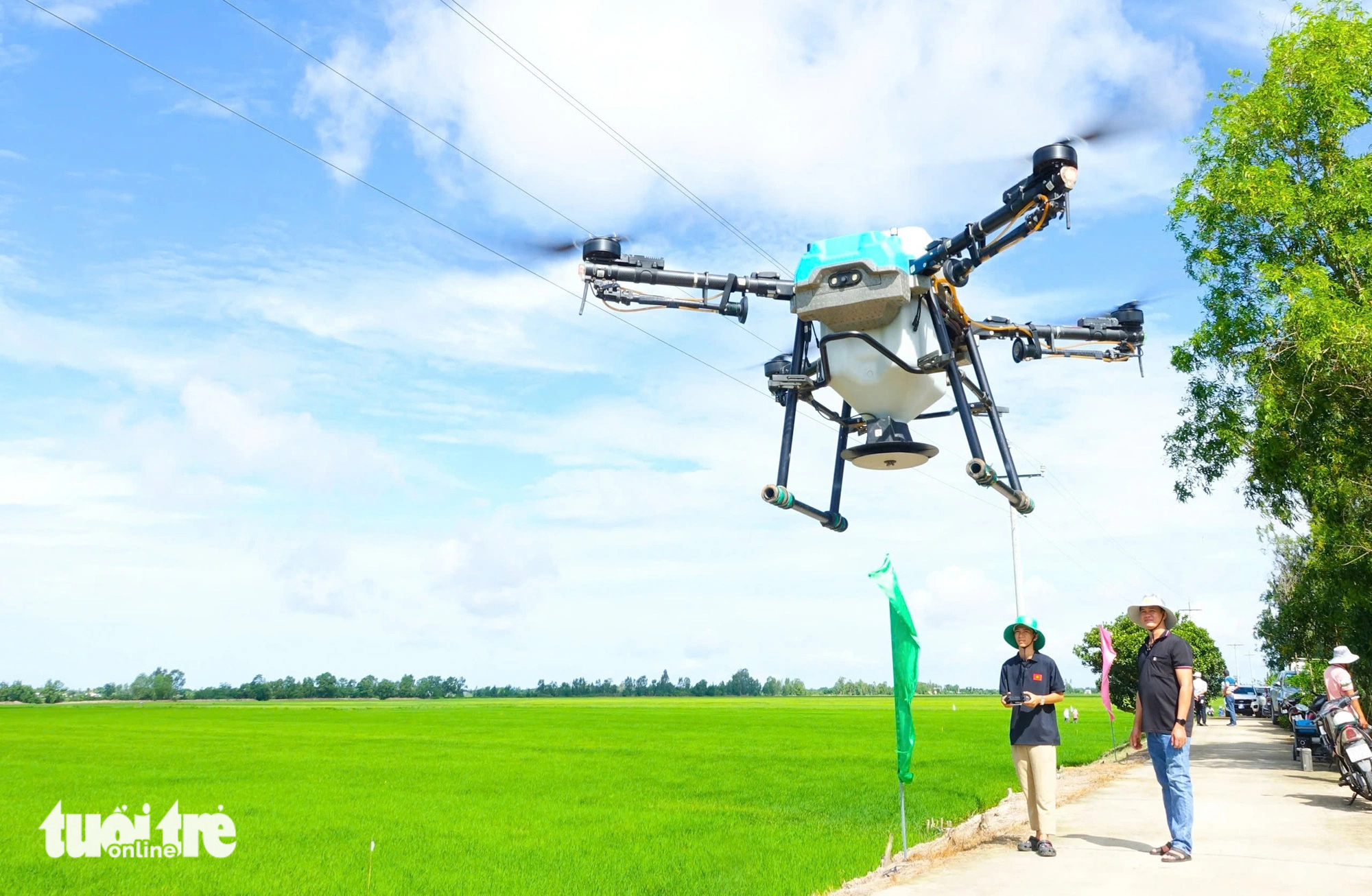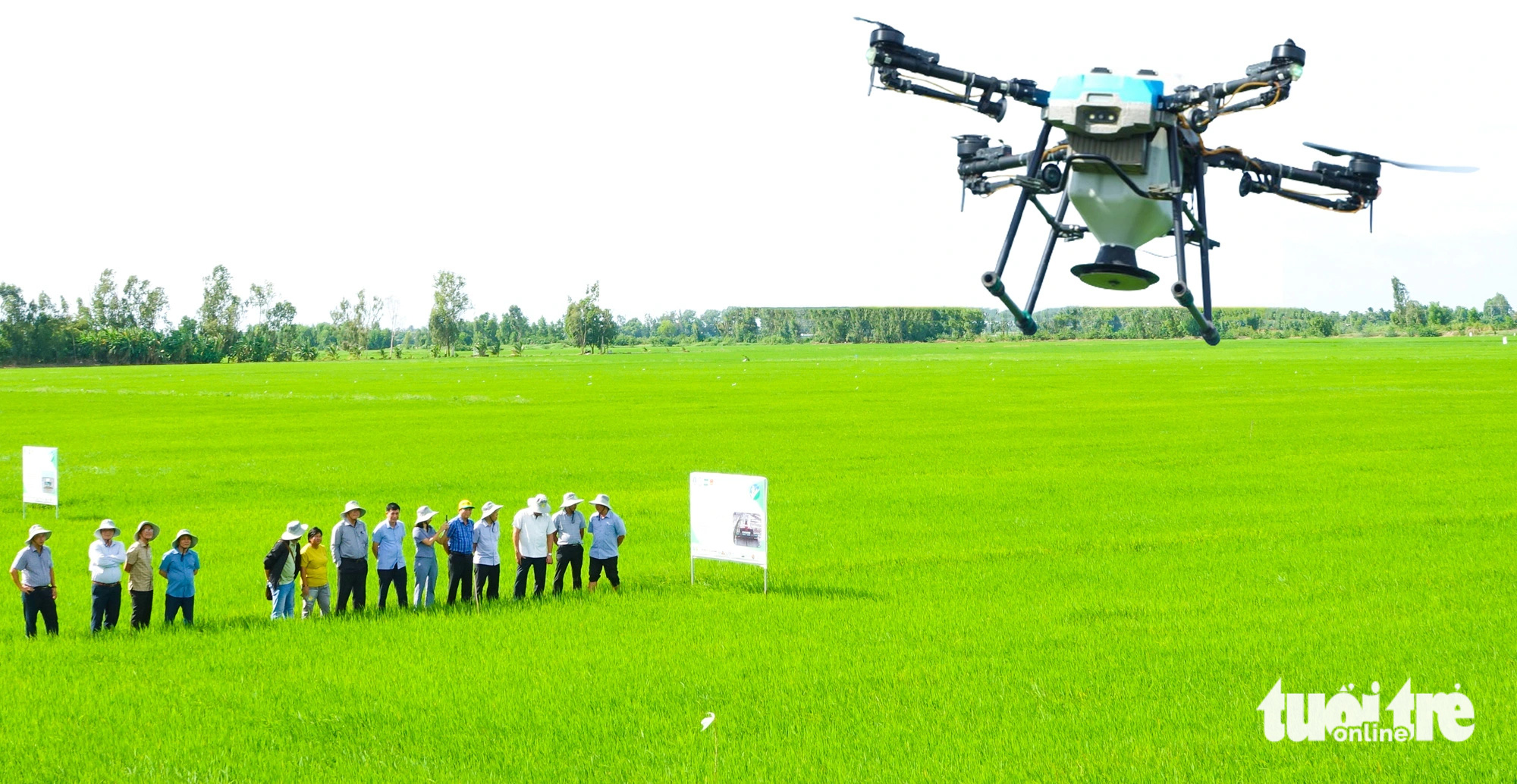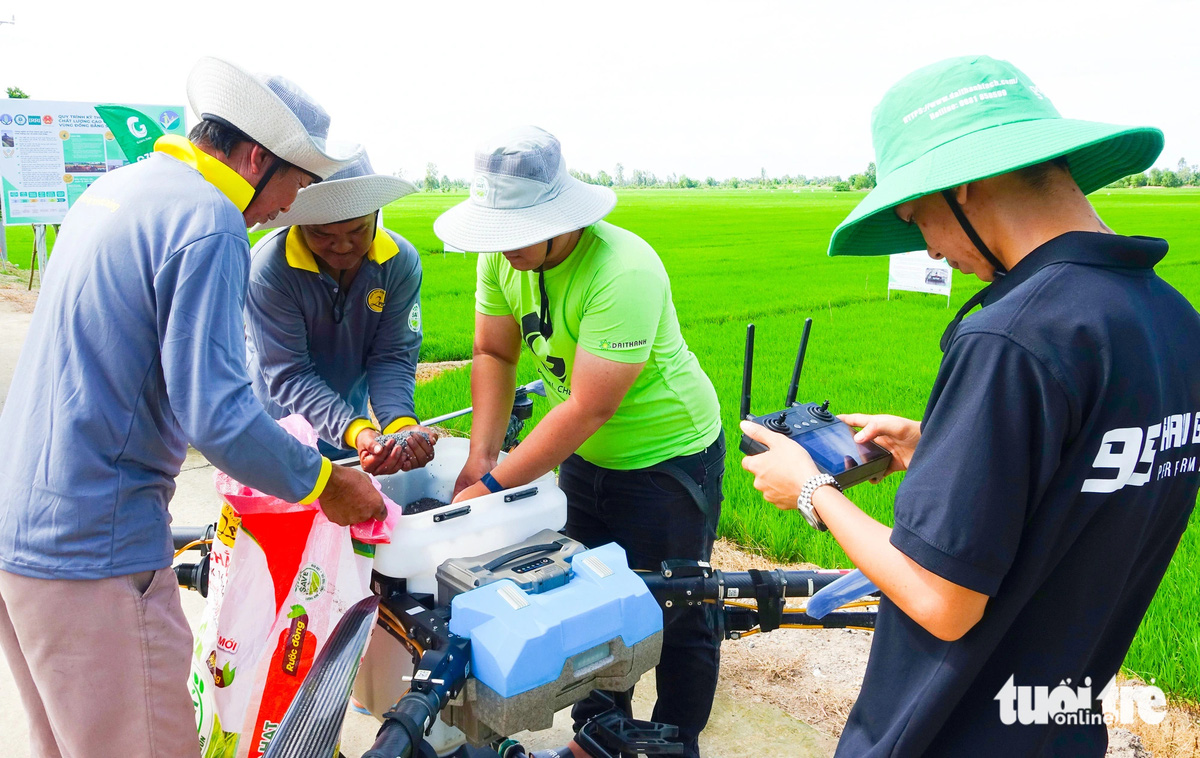Farmers in the Mekong Delta, Vietnam’s key rice-producing region, are now using drones for fertilizing, spraying pesticides, and sowing rice, which has accelerated farming processes, reduced the need for manual labor, lowered production costs, and helped address the ongoing labor shortage in the region's agricultural sector.
The vast golden rice fields in the Mekong Delta provinces of Hau Giang, An Giang, and Kien Giang are bustling with activity during the late summer-autumn harvest.
In some areas, as farmers fertilize the autumn-winter rice crop, they are delighted to see drones buzzing overhead, efficiently spreading fertilizer across the fields.
Nguyen Van Dung, a farmer in Tan Hoi Commune, Tan Hiep District, Kien Giang Province, was amazed by how much easier farming has become today.
“Just over 10 years ago, farming was labor-intensive and relied heavily on manual work -- bundling, weeding, fertilizing, spraying pesticides, and sowing,” he recalled, remembering his hands and feet covered in mud and his shirt soaked with sweat.
Now, Dung’s 3.3 hectares of rice fields are managed effortlessly with machines like tillers, plows, rice seeders, and combine harvesters.
Particularly for tasks like pesticide spraying, fertilizing, and sowing, he only needs to hire a drone team which completes the work efficiently.
“Using a drone for pesticide spraying is totally convenient,” Dung said.
“Previously, spraying pesticides on three hectares required at least three people and several days, often interrupted by rain.
"Now, the drone handles it quickly, and the rice grows well, with an estimated yield of about 900kg per hectare for the 2024 autumn-winter crop."
|
|
| A farming drone flies above rice fields in the Mekong Delta region, located in southern Vietnam. Photo: Chi Cong / Tuoi Tre |
Farmer Ho Van Huong, also from Tan Hoi Commune, noted that modern technology has significantly reduced costs.
"Hiring a drone to spread fertilizer costs only VND15,000-17,000 [US$0.6-0.68] per hectare, compared to VND25,000 [$1] per hectare for manual labor, helping me save VND8,000-10,000 [$0.32-0.4] per hectare," Huong said.
Both farmers highlighted that drones also help to address the rural labor shortage as many young people migrate from rural areas to cities for work.
Lam Quoc Toan, deputy chairman of the Farmers' Association of Kien Giang Province, highlighted that using drones in farming offers significant benefits, including saving time and improving farmers' health by reducing their exposure to harmful chemicals.
Embracing new technology
Nguyen Truong Minh, an investor in agricultural technology from Vi Thanh City, Hau Giang Province, shared that his journey into farming began by chance, driven by passion.
He invested over VND400 million ($16,093) to purchase a drone for spraying pesticides and fertilizing his family's fields. Now, he also provides these services to other farmers for additional income.
Minh noted that while various drones are available for agricultural purposes, his experience enables him to operate any model efficiently.
He explained that the drone operation is straightforward and typically requires an assistant.
The drone will spread the fertilizer or spray pesticides, while Minh just needs to prepare the batteries, containers, and any other essential items in advance.
For each field, Minh first programs the drone’s flight path before operation.
In windy conditions, he adjusts the drone’s flight direction to ensure precise application.
Minh can operate the drone at speeds of eight to ten meters per second, depending on the wind strength.
“When spraying pesticides, I control the drone to ensure the chemicals adhere to the rice,” he described his technique.
"I maintain an altitude of about three to four meters in mild winds, but lower the drone during strong winds to ensure its effectiveness."
|
|
| Farmers prepare a fertilizer container before a drone flight over rice fields in the Mekong Delta region, located in southern Vietnam. Photo: Chi Cong / Tuoi Tre |
With his expertise, Minh can cover 30–50 hectares per day and identify areas needing more fertilizer.
It is easy for him to adjust accordingly to ensure even growth and high yield.
He is considering purchasing another drone to expand his services.
In An Bien District, Kien Giang Province, Cai Van Khuong also made a bold investment in two drones for specialized agricultural services.
A lifelong farmer, Khuong initially received training from the drone company and now trains a team of younger operators while improving his skills to repair damaged drones.
Khuong notes there is rapid modernization among farmers.
“Many are now investing heavily in drones for agricultural work,” he said.
This competition benefits farmers as the cost of drone services has decreased from VND20,000 ($0.8) to VND15,000 ($0.6) per hectare.
Toan from the Farmers’ Association of Kien Giang Province noted that his association is collaborating with service providers to help farmers grow better and healthier rice given the significant need for drones to spray pesticides, spread fertilizer, and sow rice in the province’s extensive fields.
Like us on Facebook or follow us on Twitter to get the latest news about Vietnam!





















































